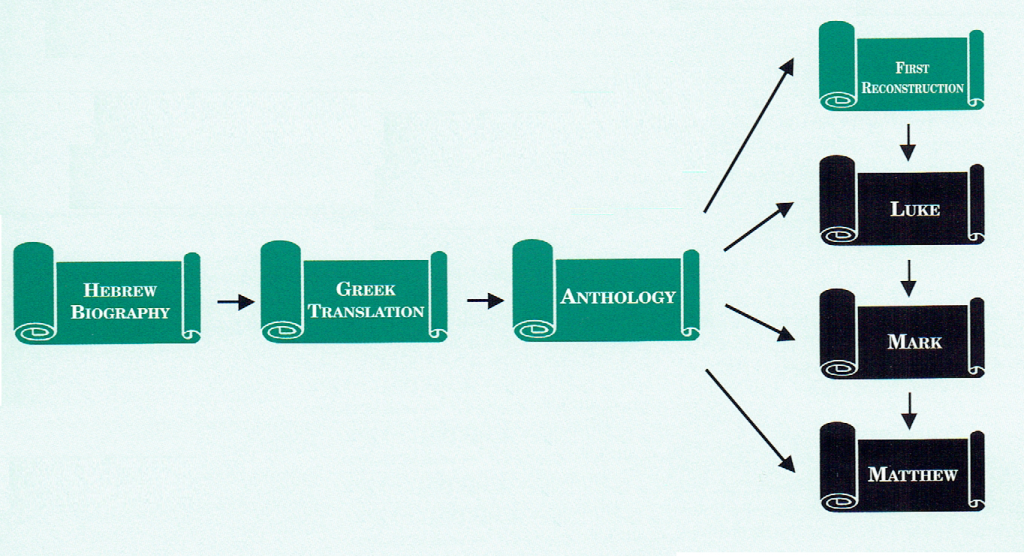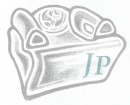How to cite this article: JP Staff Writer, “What Is the Leaven of the Pharisees?” Jerusalem Perspective (2023) [https://www.jerusalemperspective.com/26391/].
| Rather listen instead? |
| JP members can click the link below for an audio version of this essay.[*]
Paid Content
Premium Members and Friends of JP must be signed in to view this content. If you are not a Premium Member or Friend, please consider registering. Prices start at $5/month if paid annually, with other options for monthly and quarterly and more: Sign Up For Premium  |
The identity of the “leaven of the Pharisees”[9] provides us with an excellent example of the Synoptic Problem. Each of the Synoptic Gospels—Matthew, Mark and Luke—records a saying of Jesus in which he warns his disciples against the “leaven of the Pharisees,” but each Gospel identifies this leaven differently. Matthew identifies the leaven as “teaching” (Matt. 16:12). Mark does not explicitly state what the leaven is, but has Jesus chide his disciples for not understanding what he is referring to (Mark 8:17, 21). Luke identifies the leaven as “hypocrisy” (Luke 12:1).
The theory of Markan Priority can account for these different identifications in the following manner: using Mark as their source, the authors of Matthew and Luke each supplied identifications of the “leaven of the Pharisees,” which had been left unidentified in Mark. Because the authors of Matthew and Luke worked independently of one another, the two authors came up with different identifications. Matthew identified the leaven as teaching, whereas Luke identified the leaven as hypocrisy.
While the account supplied by the “Mark first” model seems simple and straightforward, it does not yield much insight into what the author of Mark wished to signify by the leaven of the Pharisees. Neither does it explain why, whereas in Luke Jesus gives a simple warning (Luke 12:1), in Mark and Matthew there is a comparatively lengthy exchange between Jesus and the disciples on the identity of the leaven (Mark 8:14-21; Matt. 16:5-12). Nor does it explain the strange agreements between the Lukan and Matthean versions of Jesus’ warning, which suggest that behind Luke and Matthew there lies a non-Markan source. We believe that a different synoptic model, namely that which Robert Lindsey championed, can yield greater insight into the “leaven of the Pharisees.” Lindsey believed that Mark was not the first of the Synoptic Gospels, but the man in the middle.[10] According to Lindsey, the author of Mark used Luke’s Gospel as a source, while the Gospel of Matthew relied upon Mark. But the author of Matthew also had access to one of Luke’s sources, which explains how Luke and Matthew could sometimes agree against Mark. Since we believe Lindsey’s hypothesis may hold the answers to the identity of the leaven of the Pharisees, it is his model that we will use as we pursue our investigation.

Premium Members and Friends of JP must be signed in to view this content.
If you are not a Premium Member or Friend, please consider registering. Prices start at $5/month if paid annually, with other options for monthly and quarterly and more: Sign Up For Premium
Conclusion
Whether or not we have successfully recovered the original meaning of Jesus’ warning against the leaven of the Pharisees, the application of Lindsey’s hypothesis to this pericope has yielded fascinating results. We have discovered a common non-Markan source behind the versions of Jesus’ warning in Luke and Matthew. We have solved the riddle of Mark’s identification of the leaven. And we have caught a glimpse of the methods by which the authors of Luke, Mark and Matthew edited their sources and compiled their Gospels.

| [*] Music in the Audio JP files is excerpted from the Hebrew song Moshe written by Immanuel Zamir in a recording sung by Yaffa Yarkoni obtained from Wikimedia Commons. |
- [1] See Robert Lindsey’s JP article, “The Major Importance of the ‘Minor’ Agreements.” ↩
- [2] Contrary to most English translations of Luke 6:11, and contrary to most commentators on this verse, ἄνοια (anoia) does not mean “anger,” “rage” or “fury.” According to LSJ, the definition of ἄνοια is “want of understanding,” “folly.” “Incomprehension” is probably the best translation of ἄνοια in Luke 6:11. See Michael Wolter, The Gospel According to Luke (2 vols.; trans. Wayne Coppins and Christoph Heilig; Waco, Tex.: Baylor, 2016-2017), 1:257-258. See also David Flusser, Judaism and the Origins of Christianity (Jerusalem: Magnes, 1988), xxvi n. 37; idem, Jesus (3d ed.; Jerusalem: Magnes, 2001), 64 n. 17; R. Steven Notley, “Anti-Jewish Tendencies in the Synoptic Gospels,” Jerusalem Perspective 51 (1996): 20-35, 38 [https://www.jerusalemperspective.com/2773/], under the subheading “Jesus and the Pharisees.” ↩
- [3] On the meaning of πώρωσις τῆς καρδίας (pōrōsis tēs kardias, “imperceptiveness of the heart”), see Ezra P. Gould, A Critical and Exegetical Commentary on the Gospel According to St. Mark (ICC; Edinburgh: T&T Clark, 1896), 53; Alfred Plummer, The Gospel According to St. Mark (Cambridge: Cambridge University Press, 1914), 101; Vincent Taylor, The Gospel According to St. Mark (2d ed.; London: Macmillan, 1966 [orig. pub. 1952]), 223; Robert H. Gundry, Mark: A Commentary on His Apology for the Cross (2 vols.; Grand Rapids: Eerdmans, 1993), 1:154. Mark’s equation of πώρωσις τῆς καρδίας with Luke’s ἄνοια shows that the author of Mark correctly understood ἄνοια not as “fury” but as “incomprehension.” ↩
- [4] See David Flusser, “Foreword to Robert Lindsey’s A Hebrew Translation of the Gospel of Mark,” under the subheading “What they might do…”; idem, Jesus, 114 n. 10; Notley, “Anti-Jewish Tendencies in the Synoptic Gospels,” under the subheading “Jesus and the Pharisees.” ↩
- [5] There is an additional reason why the author of Mark might have added a reference to the "leaven of Herod." From Luke the author of Mark would have known that Herod had hoped to see Jesus perform some miracle (Luke 23:8), which was similar to the Pharisees who demanded that Jesus perform for them a sign. See the LOY Commentary to Sign-Seeking Generation (Comment to L11). Such demands for signs and miracles only proved that both the Pharisees and Herod did not understand about Jesus. ↩
- [6] On the author of Matthew’s redactional use of τότε, see John C. Hawkins, Horae Synopticae (2d ed.; Oxford: Clarendon, 1909), 8; Randall Buth, “Edayin/Tote—Anatomy of a Semitism in Jewish Greek,” Maarav 5-6 (1990): 33-48; idem, “Matthew’s Aramaic Glue”; idem, “Distinguishing Hebrew from Aramaic in Semitized Greek Texts, with an Application for the Gospels and Pseudepigrapha” (JS2, 247-319, esp. 296-302). ↩
- [7] On the relationship between the Gospel of Matthew and the Didache, see Huub van de Sandt, “The Didache and its Relevance for Understanding the Gospel of Matthew,” Jerusalem Perspective (2016) [https://www.jerusalemperspective.com/16271/]. ↩
- [8] Such a wordplay might be compared to the way the sectarians at Qumran referred to the Pharisees as the דּוֹרְשֵׁי חֲלָקוֹת (dōrshē ḥalāqōt, “seekers of smooth things”), which is apparently a wordplay on דּוֹרְשֵׁי הֲלָכוֹת (dōrshē halāchōt, “expounders of halachot”). ↩
- [9] We prefer the translation “leaven” for ζύμη (zūmē) rather than “yeast” as in some modern translations because “yeast” is anachronistic. See the LOY Commentary to the Mustard Seed and Starter Dough parables (Comment to L31). ↩
- [10] For initial forays into Lindsey’s synoptic hypothesis, see his JP articles, “Unlocking the Synoptic Problem: Four Keys for Better Understanding Jesus” and “Introduction to A Hebrew Translation of the Gospel of Mark.” ↩




